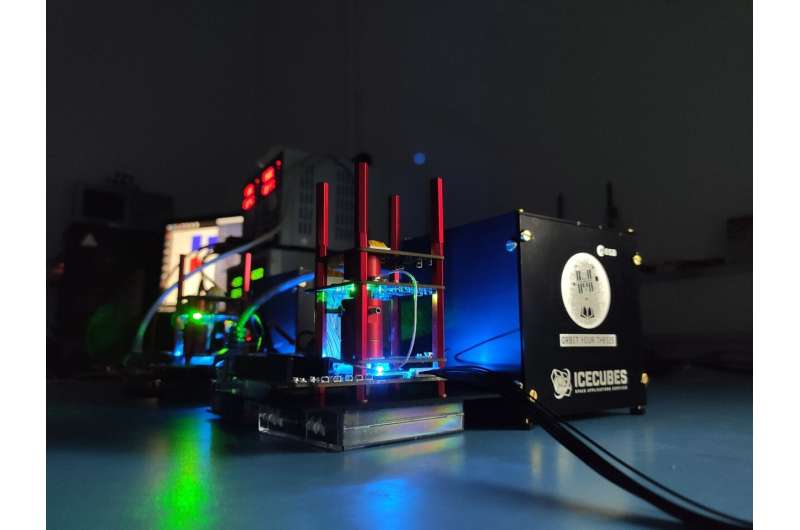Student-designed experiment to measure Earth's magnetic field arrives at Space Station

Oscar-Qube, short for Optical Sensors based on CARbon materials: QUantum Belgium, is an experiment developed by a group of students from the University of Hasselt, Belgium. Part of ESA Education Office's Orbit Your Thesis! program, the experiment arrived at the International Space Station on Space X Dragon CR23 resupply mission yesterday.
This week, ESA astronaut Thomas Pesquet will install the experiment in the Ice Cubes Facility that offers commercial and educational access to the microgravity environment of the Space Station.
Oscar-Qube's mission is to create a detailed map of Earth's magnetic field. It makes use of a new type of magnetometer that exploits diamond-based quantum sensing, meaning that it is highly sensitive, offers measurements to the nano scale, and has a better than 100-nanosecond response time.
These features combine to create a powerful experiment that, once in position, will allow it to map the Earth's magnetic field to an unrivaled level of precision.
Oscar-Qube is designed and built exclusively by the first student team to test a diamond-based quantum technology sensing device in space. They will go on to manage operations during its 10-month stay onboard the International Space Station.
Provided by European Space Agency





















